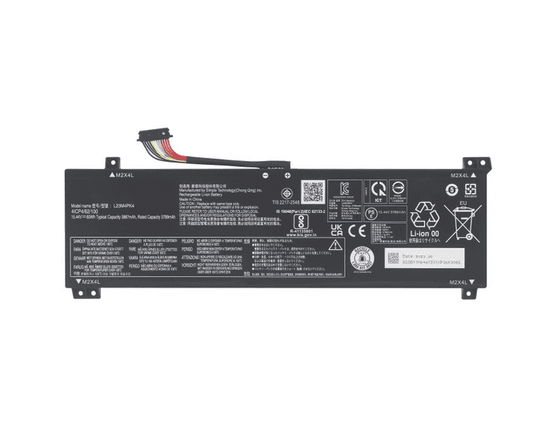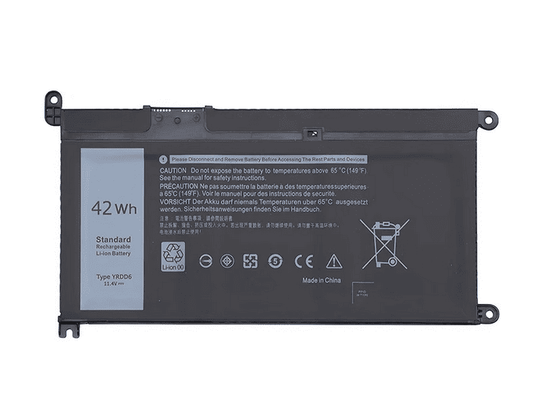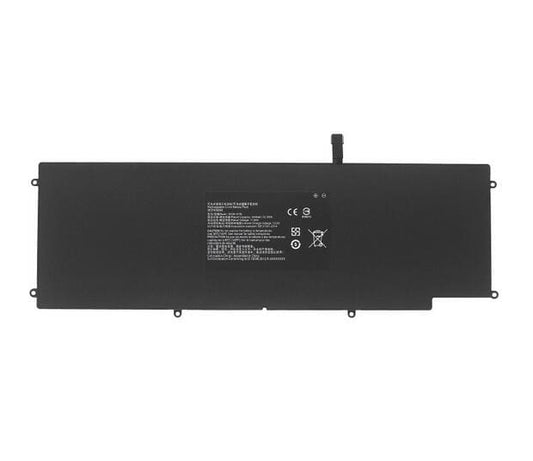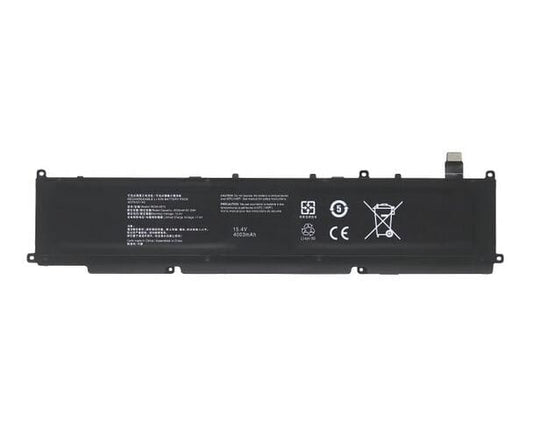
How to Keep Your Laptop Battery Healthy with Frequent Use
Share
A laptop is more than a tool—it’s the heartbeat of modern work and study. Whether used for creative projects, meetings, or entertainment, it’s often the most heavily used device in our daily lives. Yet, one component quietly determines how well this machine performs over time: the battery.
As laptop usage becomes more intensive, the battery endures constant charging, discharging, and heat exposure. Over months of daily use, these stresses can significantly reduce its lifespan. According to research by Battery University, lithium-ion batteries—found in most modern laptops—typically last 300 to 500 full charge cycles before their capacity begins to drop noticeably. That means your battery health can start declining within just one to two years if not properly cared for.
Most users assume battery degradation is inevitable, but that’s only partly true. With the right habits and conditions, you can slow down wear and extend battery efficiency far beyond average expectations. For professionals and students alike, maintaining good battery health not only saves money but also ensures consistent performance and portability.
In this guide, we’ll explore practical, evidence-based strategies to keep your laptop battery in peak condition, even under frequent use. From understanding how charging cycles work to optimizing environmental conditions, each section provides actionable advice grounded in real data and expert recommendations. By the end, you’ll know how to preserve your laptop’s most vital power source—without compromising your daily productivity.
Understanding How Laptop Batteries Work
To take proper care of your laptop battery, it’s essential to understand how it functions. Modern laptops mainly use lithium-ion (Li-ion) or lithium-polymer (Li-Po) batteries, both known for high energy density, lightweight design, and fast charging capabilities. However, they also have one limitation — gradual chemical aging.
1. The Science Behind Lithium Batteries
A lithium-ion battery stores energy through chemical reactions that move lithium ions between two electrodes: the anode (negative) and cathode (positive). During charging, ions move from the cathode to the anode; during discharging, they flow back to the cathode, generating the power that runs your laptop.
Over time, the repetitive movement of ions causes electrode degradation and chemical instability, which reduce the total charge the battery can hold. According to Samsung SDI’s battery research, a typical lithium-ion cell loses about 20% of its capacity after 500 charge cycles.
A “cycle” doesn’t necessarily mean a single charge from 0% to 100%; it refers to the total of one full discharge, which could happen over several partial charges. For instance, charging from 50% to 100% twice counts as one cycle.
2. What Affects Battery Degradation
Battery health isn’t only about how often you charge it — several key factors influence its longevity:
- Heat: High temperature is the biggest enemy of lithium batteries. When the internal temperature exceeds 35°C (95°F), chemical reactions accelerate, shortening lifespan.
- Deep Discharges: Frequently draining your battery below 20% increases internal stress, damaging cells faster.
- Constant Full Charging: Keeping your battery at 100% continuously, especially when plugged in for long hours, speeds up wear.
- High Performance Load: Running power-hungry tasks like video editing or gaming while charging can generate excess heat, compounding damage.
According to Dell’s power management guide, laptop batteries perform best when kept between 20% and 80% charge in moderate temperatures (15°C–30°C).
3. Smart Battery Management Systems
Modern laptops use Battery Management Systems (BMS) to regulate charging, temperature, and voltage. These built-in systems prevent overcharging and overheating. Some brands like Apple, Lenovo, and ASUS even include software-based features such as Adaptive Charging or Battery Conservation Mode, which intelligently pause charging once the battery reaches a set level—usually around 80%.
Still, technology can only go so far. The user’s habits—how often and how long the laptop remains plugged in—play a decisive role. Understanding these fundamentals allows you to apply smarter daily routines that significantly extend battery life.
Daily Habits That Prolong Battery Life
Good habits can make a dramatic difference in how long your laptop battery lasts. While battery technology has improved, everyday behavior still determines how effectively your device retains capacity over time. Here’s how to make small, practical adjustments that deliver long-term benefits.
1. Maintain a Moderate Charging Range
Avoid keeping your laptop fully charged or fully drained for long periods. Studies from Battery University show that lithium-ion cells age fastest when kept near 100% or 0%. The ideal range for most laptops is between 20% and 80%.
If you often use your laptop plugged in, enable your manufacturer’s battery optimization mode. For example:
- Apple macOS: Uses “Optimized Battery Charging,” learning your habits to limit full charges.
- Lenovo: Offers a “Conservation Mode” that caps charge at 80%.
- ASUS and Dell: Provide “Battery Health Charging” or “Battery Extender” settings.
This small adjustment reduces voltage stress and slows chemical wear.
2. Avoid Overheating
Heat is a silent killer of battery health. When temperatures rise above 35°C (95°F), chemical reactions inside the cells accelerate, permanently reducing capacity.
To minimize heat damage:
- Use your laptop on hard, flat surfaces instead of soft materials like beds or cushions.
- Clean air vents regularly to prevent dust buildup.
- Avoid leaving your laptop in hot cars or direct sunlight.
- Consider using a cooling pad if you run demanding software frequently.
According to HP’s engineering team, maintaining internal temperatures below 30°C (86°F) can nearly double a battery’s usable lifespan.
3. Unplug Smartly and Use Power Saving Modes
It’s tempting to leave your laptop plugged in all day, especially at work. However, constantly charging at 100% exposes the battery to high voltage, speeding up degradation.
Try this routine:
- When you reach 80–85%, unplug the charger.
- Reconnect it once the level drops below 25–30%.
In addition, enable Battery Saver or Eco Mode when performing light tasks such as writing, browsing, or streaming. These features lower CPU performance slightly but significantly reduce energy draw and heat generation.
4. Reduce Background Power Drain
Even when idle, background tasks consume energy that triggers more charging cycles. Regularly check for unnecessary startup programs, auto-updates, or active Bluetooth connections.
A few quick fixes include:
- Turning off Wi-Fi and Bluetooth when not in use.
- Lowering screen brightness.
- Using dark mode or adaptive brightness features.
- Closing heavy apps like Chrome tabs or editing software when not needed.
A study by Microsoft Research found that reducing screen brightness to 50% alone can extend battery runtime by up to 30%.
5. Follow Seasonal Care Tips
Battery chemistry reacts differently to temperature extremes. In winter, cold conditions slow chemical activity, reducing performance but not damaging the cells. In summer, however, excessive heat causes irreversible harm.
During hot months, avoid using your laptop outdoors for long sessions or inside vehicles without ventilation. In winter, let your device warm up to room temperature before charging—it helps prevent internal stress caused by sudden temperature shifts.
Healthy battery habits are cumulative. Every small action—from unplugging at the right time to managing temperature—adds up. Over months of frequent use, these choices can extend your battery’s lifespan by 30–50%, saving both time and money in the long run.
Environmental and Charging Conditions
Even the most advanced laptop batteries depend heavily on their surroundings. External conditions—such as temperature, humidity, and power quality—can either protect or damage your battery’s internal chemistry. Understanding and controlling these factors ensures consistent performance over years of daily use.
1. Temperature: The Hidden Enemy
Temperature directly affects how efficiently lithium-ion batteries operate. Most manufacturers recommend using laptops within a range of 10°C to 35°C (50°F to 95°F). Anything beyond that accelerates aging.
- High Heat: At 40°C (104°F), battery degradation occurs almost twice as fast as at 25°C (77°F). The electrolyte inside the cell starts breaking down, permanently reducing capacity.
- Extreme Cold: Below 0°C (32°F), chemical reactions slow dramatically, leading to voltage drops and poor charging performance.
Whenever possible, store your laptop in climate-controlled environments. Avoid keeping it in parked cars, near heaters, or under direct sunlight. If your device becomes hot during intensive tasks, let it cool before charging. This practice prevents both thermal stress and cell swelling.
2. Humidity and Air Quality
Humidity often goes unnoticed but can impact long-term battery health. High moisture levels promote corrosion of battery terminals and internal circuitry. Ideally, keep relative humidity between 30% and 60%.
If you live in a humid climate, use silica gel packs in your workspace or invest in a small dehumidifier. On the other hand, extremely dry environments can cause static electricity buildup, which might damage sensitive electronic components. Balanced air quality supports both safety and reliability.
3. Power Quality and Charging Source
Not all chargers are created equal. Poor-quality or third-party adapters without proper voltage regulation can shorten battery lifespan or even cause permanent damage. Always use the original manufacturer charger or a certified replacement with matching voltage and current ratings.
Research from UL (Underwriters Laboratories) shows that uncertified power adapters can fluctuate by more than 15% in voltage output, stressing the battery management system and heating internal components.
When using public power outlets—especially in older buildings or shared spaces—consider plugging your charger into a surge protector. Power surges from unstable grids can harm both the battery and motherboard.
4. Charging Patterns for Frequent Users
If you use your laptop for long hours every day, controlled charging becomes essential. Avoid leaving your device at 100% charge overnight or while sleeping. Instead:
- Keep charge levels between 40% and 80% when possible.
- Use “Sleep” or “Hibernate” modes instead of shutting down during short breaks.
- If you must store the laptop unused for several weeks, keep it charged to about 50%, not full.
Apple and ASUS recommend this range because it maintains optimal chemical balance within lithium cells, preventing both deep discharge and overvoltage stress.
5. Placement and Air Circulation
Your laptop’s placement affects both temperature and power safety. Ensure that air vents remain unblocked to maintain steady airflow. Avoid placing laptops directly on soft materials like blankets or pillows, which trap heat.
For heavy daily users, using an external stand or cooling base improves circulation and keeps components cooler by 5–10°C on average, significantly easing battery load.
Environmental awareness isn’t just about comfort—it’s about battery preservation. Small environmental adjustments, such as managing heat and ensuring clean power, can extend your battery’s usable life by up to two additional years. When combined with proper daily habits, your laptop will stay reliable and efficient even under high-frequency use.
Long-Term Maintenance and Replacement Tips
Even with careful use, all laptop batteries eventually age. Chemical wear is a natural part of the process, but with consistent maintenance and smart replacement planning, you can ensure your laptop remains dependable for years. This chapter explores how to monitor battery health, when to replace it, and what to consider when choosing a new one.
1. Regularly Check Battery Health
Monitoring your battery’s condition helps you identify problems early. Most operating systems include built-in diagnostic tools:
Windows: Use the command prompt and type: powercfg /batteryreport
This generates a detailed report showing charge cycles, design capacity, and current capacity.
macOS: Hold Option and click the Apple menu → System Information → Power. You’ll see health status and cycle count.
Linux/Ubuntu: Run
upower -i /org/freedesktop/UPower/devices/battery_BAT0
or install Battery Monitor for a visual interface.
2. Calibrate the Battery Periodically
Battery calibration helps your system read remaining charge levels accurately. Modern lithium-ion batteries don’t need it often, but performing it every 3–6 months keeps the power gauge reliable.
To calibrate:
- Charge your laptop to 100%.
- Keep it plugged in for an extra 2 hours.
- Unplug and use it until the battery drains to around 5%.
- Recharge it fully without interruption.
This doesn’t improve capacity, but it ensures accurate readings, helping you avoid sudden shutdowns and optimize charging habits.
3. Avoid Long-Term Storage at Full or Empty Charge
If you need to store your laptop or spare battery for a long period, avoid doing so at 100% or 0%. Both extremes cause chemical stress and capacity loss. The ideal storage charge is around 50% in a cool, dry place—preferably at 15°C to 25°C (59°F to 77°F).
According to Panasonic Energy, batteries stored at 100% capacity in warm conditions can lose up to 20% of their total capacity within a year, even if unused.
4. Know When It’s Time to Replace
All lithium-ion batteries eventually reach the end of their useful life, typically after 500–800 charge cycles. You may notice signs like:
- Rapidly dropping charge levels.
- Sudden shutdowns despite high percentage readings.
- Battery swelling or heating even at light usage.
If you experience these, replacement is the safest and most cost-effective option. Continuing to use a severely degraded or swollen battery risks motherboard damage or safety hazards.
5. Choose a Genuine Replacement
When replacing a battery, always purchase genuine or certified OEM parts. Counterfeit or low-quality third-party batteries often lack proper safety circuitry, leading to overheating or shortened lifespan.
Before buying, check:
- Model compatibility (exact part number).
- Manufacturer certification (e.g., UL, CE, or RoHS).
- Warranty and after-sales support.
Brands like HP, Dell, and Lenovo offer official replacement programs, ensuring both performance and safety. If you buy from independent retailers, verify the product’s serial number and packaging to confirm authenticity.
6. Keep Software and Firmware Updated
Battery performance also depends on your system’s firmware and driver optimization. Manufacturers regularly release updates to improve energy efficiency, charging patterns, and temperature control. Enable automatic system updates or check your laptop brand’s support site every few months.
Keeping your BIOS and battery firmware current can resolve charging issues and prolong overall system stability.
7. Dispose of Old Batteries Safely
Never throw old laptop batteries in the trash. Lithium cells are considered hazardous waste and can cause fires or environmental harm if mishandled.
Take them to:
- Local e-waste recycling centers.
- Electronics stores with battery collection programs (like Best Buy or Staples).
- Official municipal hazardous waste collection points.
Responsible disposal protects both the environment and public safety.
Caring for your battery doesn’t end with daily habits—it’s a long-term commitment. Regular health checks, careful calibration, and proper replacement choices keep your laptop running efficiently and safely, even after years of heavy use.
Conclusion
Your laptop’s battery is more than just a power source—it’s the lifeline of your device’s mobility and reliability. With frequent use, even the best batteries naturally wear down. However, smart habits and proper care can dramatically extend their lifespan and performance.
By maintaining moderate charge levels, controlling temperature, and using genuine chargers, you can slow degradation and keep your laptop running at its best. Regularly checking battery health, calibrating occasionally, and planning timely replacements help you stay in control instead of reacting to sudden failures.
In short, a well-cared-for battery doesn’t just last longer—it performs better every day. Treat your laptop’s power system as an investment, not a disposable part. With mindful use and consistent maintenance, your device will remain dependable for years, delivering smooth performance and reliable energy whenever you need it.




